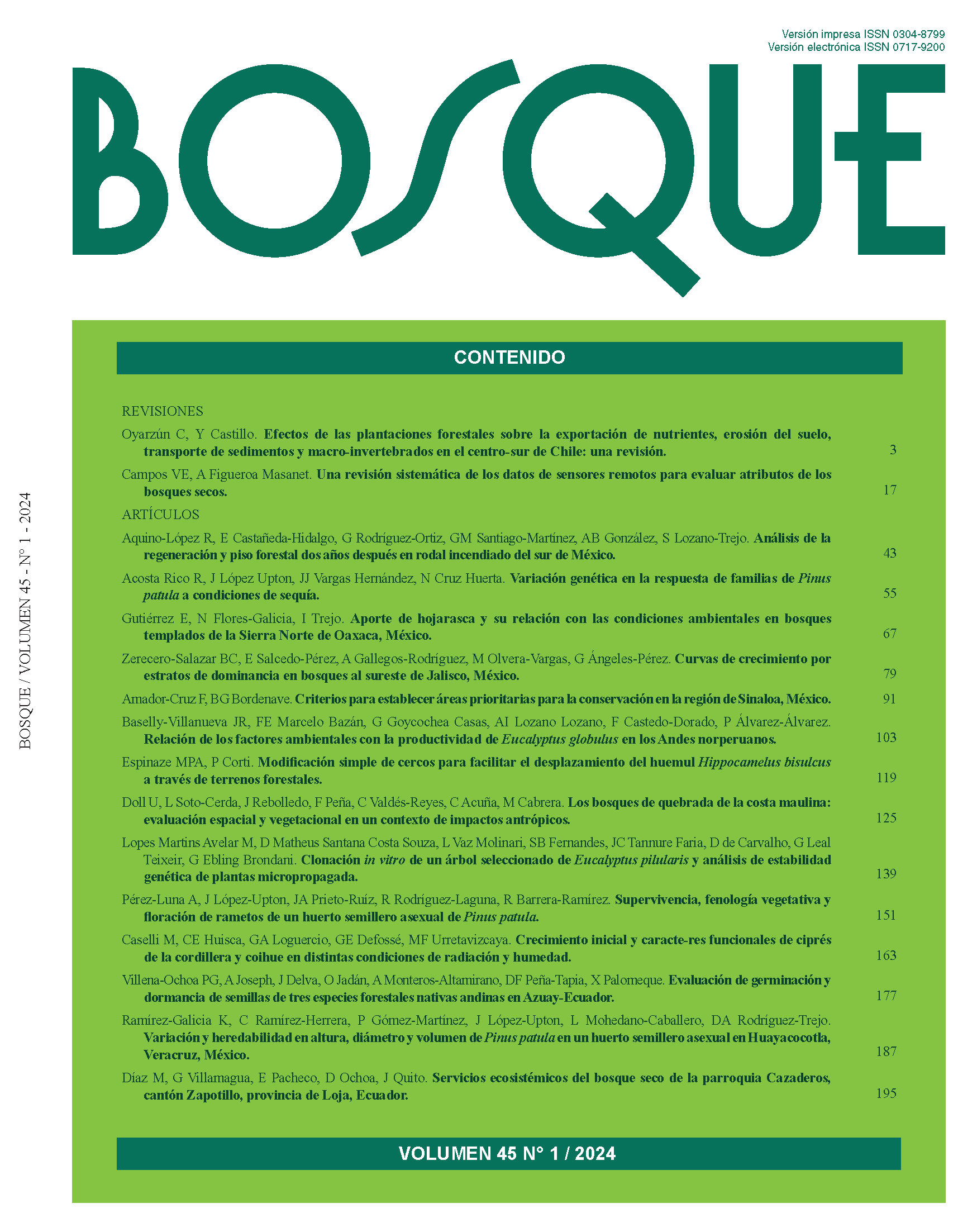Evaluation of germination and dormancy of seeds of three Andean native forest species in Azuay-Ecuador
Main Article Content
Abstract
Physiological processes such as seed germination and dormancy under controlled conditions of Andean Forest species are poorly known. For this reason, the objective of the present study was to evaluate in three forest Andean species: Myrcianthes rhopaloides, Oreocallis grandiflora, and Weinmannia fagaroides, the pre-germination, chemical and physical treatments in relation to germination and dormancy. Firstly, the seeds were disinfected and placed in Petri dishes, to evaluate germination with: a) cold stratification, b) hot humid stratification, c) immersion in GA3 at 270 ppm and d) acid scarification (immersion in 10 % H2SO4). In a growth chamber under controlled environmental conditions, germination was monitored for a period of 30 days. The seeds’ physical dormancy was evaluated by an imbibition test. Morphological dormancy was evaluated using 100 seeds and 20 embryos per species that were extracted and measured with an electron stereoscope. The results show that the seeds of the species under study increased the percentage and speed of germination when gibberellic acid was applied compared to the other treatments, while the effect of acid scarification was significantly lower in all species. Likewise, it was found that the seeds lack physical and morphological dormancy, however, when analyzing the behavior of the seeds in acid, the presence of a physiological type of dormancy is suggested. These results support the knowledge of these Andean Forest species for the purposes of conservation and plant production for reforestation.


 https://orcid.org/0000-0002-3444-617X
https://orcid.org/0000-0002-3444-617X